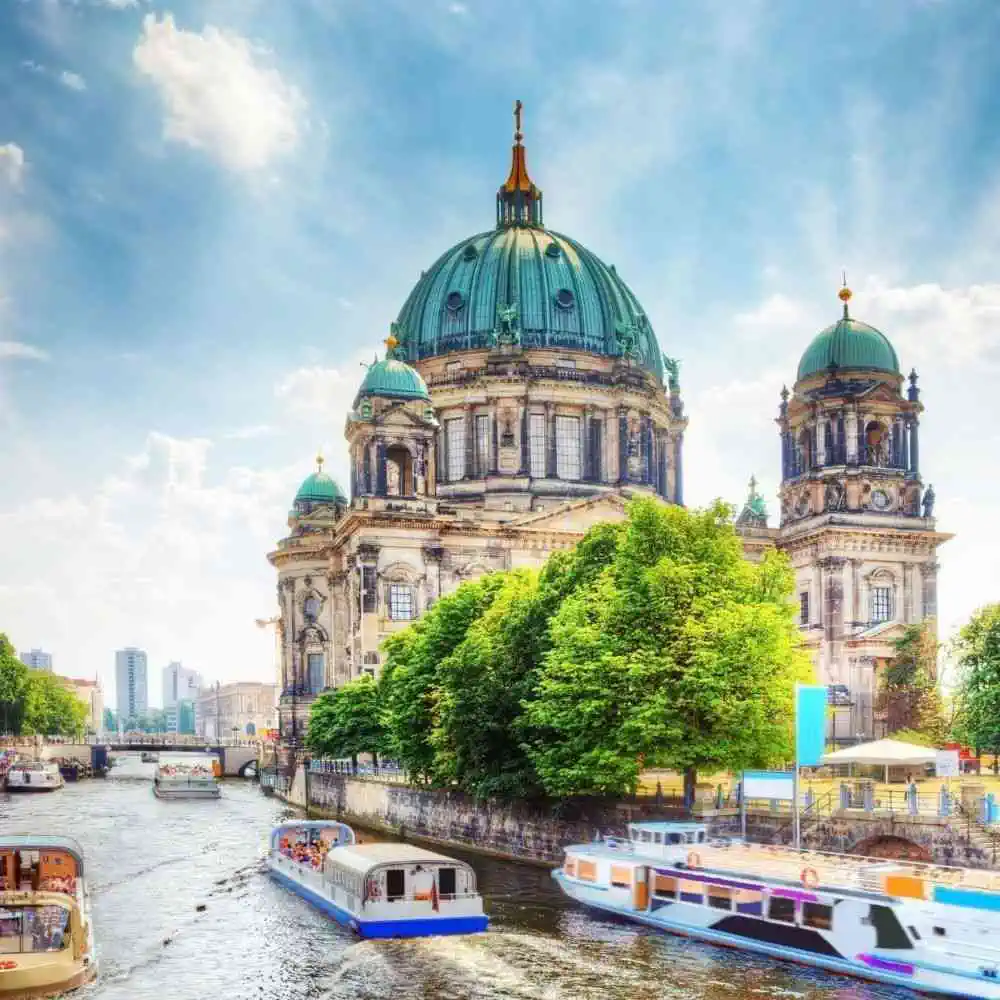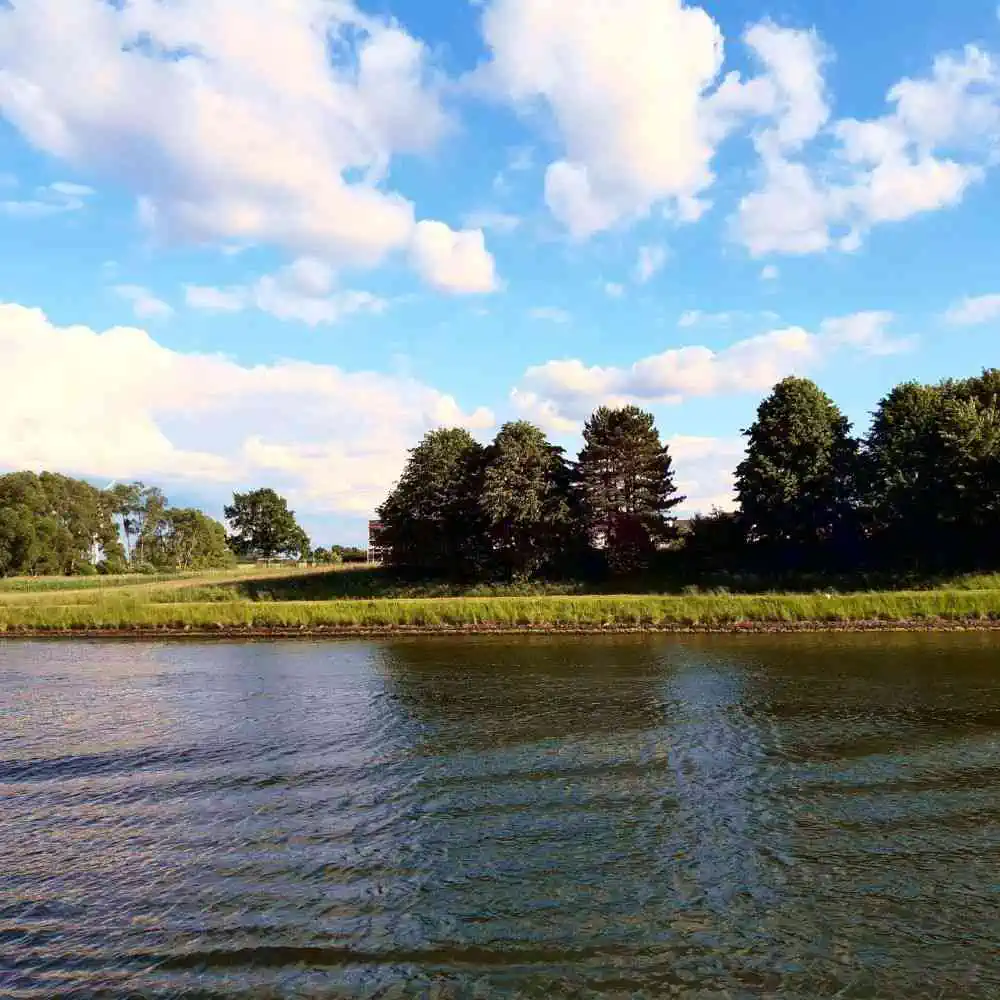You will depart from Berlin Hbf, located right in the city center of Berlin, and enjoy the beautiful scenery of the journey while you arrive in Kiel Hbf, also located in the heart of Kiel.
Trains from Berlin to Kielfrom € 25.00
Trains from Berlin to Kiel
Travelling by train: Berlin - Kiel

Journey details
How long does the train from Berlin to Kiel take?
The train ride from Berlin to Kiel by train usually lasts about 3 hours and 23 minutes, with some trains taking up to 4 hours.
What is the fastest journey from Berlin to Kiel by train?
The fastest train journey from Berlin to Kiel by train takes about 2 hours and 55 minutes.
How much does the train cost from Berlin to Kiel?
The cost of the train from Berlin to Kiel can vary, but it usually costs around €25 for a one-way ticket.
How much does the Berlin to Kiel?
Yes, there is a direct train from Berlin to Kiel.
What is the distance from Berlin to Kiel by train?
The distance from Berlin to Kiel by train is 203 km.
Which are the cities that the train stops from Berlin to Kiel?
The cities that the train stops from Berlin to Kiel includes Berlin, Hamburg, Lübeck, Wismar, and Kiel. The train stops at the Berlin Hauptbahnhof, Hamburg Hauptbahnhof, Lübeck Hauptbahnhof, Wismar Hauptbahnhof, and Kiel Hauptbahnhof.
Berlin: Places to see
Berlin is a city full of history and culture, and it has plenty of attractions to visit for the perfect vacation. From famous landmarks and monuments to trying a wide variety of food, it is a city meant to be experienced. Here’s a list of the seven must-visit historical and architectural sites in Berlin so you can plan an exciting itinerary for your trip.
Brandenburg Gate: Built in 1791, this iconic landmark is the symbol of German unity. Visitors can find the Brandenburg Gate on Pariser Platz in central Berlin. It is free to visit, and the views of the city skyline at night are particularly stunning.
Reichstag Building: The Reichstag was completed in 1894 and houses Germany’s parliament. Visitors can take a tour of the building free of charge. The glass dome is a popular attraction, with its 360-degree views of Berlin.
East Side Gallery: This open-air gallery is located along the Spree River and features a mural painted in 1990 by 118 artists from around the world. Not only is it a spectacular sight in itself, but it’s also a memorial for the fall of the Berlin Wall.
Museumsinsel: This UNESCO World Heritage site is an island located in the Spree River and is home to five different museums: Pergamon Museum, Altes Museum, Neues Museum, Bode Museum and Alte Nationalgalerie. The Pergamon Museum has some of the world’s greatest ruins, and entrance fee depends on which museums visitors choose to attend.
Memorial to the Murdered Jews of Europe: This large memorial is made up of concrete stelae and spans across 4.7 acres in the center of Berlin. It is a powerful reminder of the millions of Jewish people who were murdered in the Holocaust.
Charlottenburg Palace: This rococo-style palace was built in the 17th century, and it is a popular attraction with tourists. Visitors can tour the palace and its extensive gardens for an entrance fee.
Kulturbrauerei: This is a former brewery that has been converted into an entertainment and cultural center. Visitors can enjoy live music, theatre, and comedy at the Kulturbrauerei, located in the heart of Berlin.
Aside from these key attractions, don’t forget to sample the local cuisine! Berlin is filled with delicious restaurants serving traditional German dishes, such as bratwurst and schnitzel. Head to a local beer garden or café to experience the best of Berlin’s culinary offerings. With its vast array of attractions, Berlin is the perfect holiday destination for history and culture-lovers alike.

Kiel: Places to see
Kiel is a vibrant and beautiful port city in the German state of Schleswig-Holstein. With a rich history of seafaring and trade, Kiel is a destination for those seeking a combination of picturesque waterfronts and cultural immersion. Whether you’re looking for grand architecture or cool nightlife, there’s something for everyone here. From ancient historical sites to contemporary cafes, here are the top things to do, see and try in Kiel.
Kiel Fjord: Kiel Fjord is a stunning body of water that can be explored by boat or kayak. Here travelers can take in the views of the surrounding mountains and Kiel’s maritime charm. The fjord is also home to an array of wildlife, including seals and seabirds.
St. Nicholas' Church: St. Nicholas' Church is a Gothic-style cathedral and one of Kiel’s most important historical and architectural sites. The building, dating back to the 13th century, boasts a distinctive onion dome and is renowned for its beauty and grandeur.
Old Market Square: Old Market Square is at the heart of the city and is a major attraction in Kiel. Surrounded by centuries-old buildings, the market square hosts an array of markets, events, and festivals, and is also an excellent spot to sample some local food and drink.
Kiel Canal: Kiel Canal is an impressive feat of engineering and connects the Baltic Sea with the North Sea. It is the busiest artificial waterway in the world and can be explored on a boat tour or from a nearby bridge.
Kiel Town Hall: Kiel Town Hall is a stunning Renaissance building in the heart of the city. Its façade is adorned with statues, while its interior is decorated with lavish stucco work and frescoes. It is open to the public and offers guided tours.
Kiel Aquarium and Zoo: Kiel Aquarium and Zoo is a great place for travelers with kids. It is home to a huge array of species and features a diverse array of walk-through exhibits.
Forum Kiel: Forum Kiel is a contemporary entertainment venue and cultural hub with an array of live music, theater, and film screenings. Its many restaurants and bars are popular with locals and visitors alike.
From stunning architecture to fascinating historical sites, Kiel has something for everyone. Its combination of vibrant nightlife and picturesque waterfronts make it the perfect place to explore and unwind. And, be sure to feast on Kiel’s regional specialties, such as its delicious fish and smoked salmon.

Berlin: Main train stations
Berlin, in Germany is home to several train stations, with Hauptbahnhof being the largest and most important. This main train station is the bustling heart of the city, with connections to all parts of city, as well as connecting to neighboring countries. In addition to Hauptbahnhof, there are several other smaller train stations in Berlin, such as Alexanderplatz, Südkreuz and Zoologischer Garten.
Hauptbahnhof is located on Washingtonplatz in the Moabit district and is open 24/7. It offers travelers services such as ticketing, luggage storage, souvenirs, ATM and exchange offices, as well as international call centers. The station is easily accessible by public transport and offers connections to a variety of places to visit, both inside and outside of Berlin. To find out more information, you can call the customer help line at +49 30 297 10.
- Berlin HBF
- Berlin Hbf (S-Bahn)
- Berlin Schonefeld Flughafen
- Berlin Ostbahnhof
- Berlin Charlottenburg
- Berlin Spandau
- Berlin Sudkreuz (S)
- Berlin Gesundbrunnen
- Berlin Potsdamer Platz
- Berlin Zoologischer Garten
- Berlin Lichtenberg
- Berlin Hohenschonhausen
Kiel: Main train stations
Kiel, in Germany, is home to the main railway station for the area, Kiel Hauptbahnhof. The station is the hub of the city’s railway network and offers connections to towns both near and far. There are also several other significant train stations within Kiel, including Kiel-Wik, Kiel-Schreventeich, and Kiel-Mettenhof.
Kiel Hauptbahnhof is located at Hermann-Föge-Straße 1, 24103 Kiel, Germany. It is open 24 hours a day, allowing travelers to come and go as they need. The station has a customer service center which can be contacted over the phone on +49 (0)431 9568 50 or by email at kundencenter@kb-kiel.de. It also offers luggage storage for short-term visitors.
- Kiel Hbf
Berlin - Kiel: How to get the best deals
Book in Advance:
Just like with airfares, train ticket prices tend to rise as the departure date gets closer. Booking weeks or even months in advance can save you a significant amount.
Travel During Off-Peak Hours:
Avoid traveling during peak times such as weekday mornings and evenings. Opt for midday, late evening, or mid-week rides when there's less demand.
Consider Slower Trains or non direct routes:
Express or high-speed trains might save time, but they're often pricier. Opting for regional or slower services can reduce your fare.
Look for Special Deals and Promotions:
Train operators occasionally have promotions or special deals, especially during off-peak seasons. It's worth signing up for newsletters. Additionally, there are sometimes group or return ticket discounts, so consider these options if they fit your travel plans.
All you need to know about
Need our help?
- Contact Us
Guaranteed secure payment
Certificates


